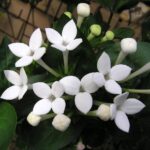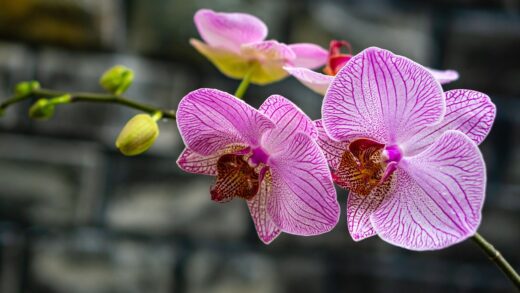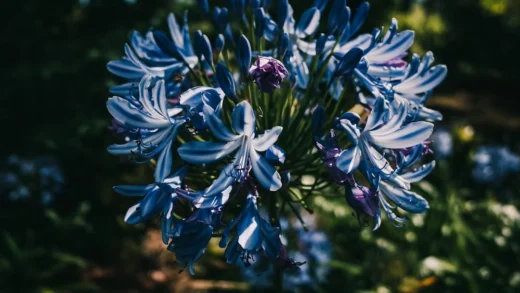While aloe vera is a famously hardy and resilient plant, it is not entirely immune to diseases and pests. Most problems that arise are directly linked to improper growing conditions, particularly those related to excess moisture and poor air circulation. A healthy, well-cared-for plant has strong natural defenses and is far less likely to succumb to opportunistic pathogens or insects. Therefore, the first and most effective line of defense is always preventative care, ensuring the plant has the right light, water, and soil conditions to thrive.
When problems do occur, they typically fall into two main categories: fungal diseases, which are almost always a result of overwatering, and sap-sucking insect pests, which can attack a weakened or stressed plant. Early identification is crucial for effective treatment. Regularly inspecting your plant, including the undersides of leaves and the junction where the leaves meet the stem, will help you catch any issues before they become severe infestations or infections.
Fungal diseases like root rot and basal stem rot are the most serious threats to an aloe vera’s life, attacking the plant from below the soil line. These issues are insidious because they are often advanced by the time visible symptoms appear on the leaves. Pests such as mealybugs and scale insects, while less immediately fatal, can drain the plant of its vitality, cause cosmetic damage, and can spread to other houseplants if not controlled.
This guide will cover the most common diseases and pests that affect aloe vera, providing you with the knowledge to identify them, understand their causes, and implement effective treatment and control strategies. By combining preventative care with vigilant observation, you can protect your plant from these potential threats and ensure its long-term health and vitality.
Preventing problems before they start
The cornerstone of disease and pest management for aloe vera is prevention through proper cultural practices. A plant that is grown in optimal conditions is inherently more robust and less susceptible to attack. The single most important preventative measure is to master your watering technique. Since most fungal diseases are caused by waterlogged soil, allowing the soil to dry out completely between thorough waterings is your best defense against rot.
Providing adequate light and air circulation is another key preventative strategy. An aloe vera grown in bright, indirect light will be stronger and more vigorous than one languishing in a dim corner. Good airflow around the plant helps to keep the leaf surfaces dry and discourages both fungal spores from settling and pests from establishing colonies. Avoid crowding your plants too closely together to ensure each one has sufficient circulation.
Using the correct potting medium and a container with excellent drainage is a foundational element of prevention. A gritty, fast-draining succulent mix ensures that the roots are never sitting in stagnant water. A terracotta pot, which allows moisture to evaporate through its walls, provides an additional layer of security. These choices create an environment that is hospitable to the aloe’s roots and inhospitable to the pathogens that cause rot.
Finally, practicing good plant hygiene can help prevent the introduction and spread of problems. When you bring a new plant home, it is wise to quarantine it for a few weeks to ensure it is not carrying any hidden pests or diseases. Use clean, sterile tools when pruning or repotting to avoid transferring pathogens from one plant to another. Regularly removing any dead or dying leaves from the plant and the soil surface eliminates potential hiding spots for pests and breeding grounds for fungi.
Common fungal diseases
By far the most common and deadly disease to affect aloe vera is root rot. This is not caused by a single pathogen but is rather a condition of decay that occurs when the roots are deprived of oxygen due to waterlogged soil. Opportunistic fungi, such as Pythium and Phytophthora, thrive in these anaerobic conditions and begin to attack and decompose the dying root tissue. The visible symptoms above ground, such as yellowing leaves and a mushy base, often only appear after significant damage has already occurred below the soil.
Basal stem rot is a related and equally serious fungal issue. It often occurs in conjunction with root rot and affects the base of the plant where the leaves emerge from the stem. The stem will become soft, dark, and mushy, and the entire plant may start to lean over. This condition is almost always fatal, as it destroys the plant’s core vascular tissue. It is caused by the same conditions of excessive moisture and poor drainage that lead to root rot.
Another fungal issue, though less common and less severe, is aloe rust. This appears as distinct, circular, yellowish-orange to dark brown spots on the leaves. These spots are caused by a fungus that enters the leaf tissue, often through a small wound or puncture. While it can be unsightly, aloe rust is typically not a threat to the overall health of the plant. It is often linked to high humidity or water sitting on the leaves for extended periods.
Treating fungal diseases is challenging. For root and basal stem rot, the only chance of survival is to act quickly. Unpot the plant, cut away all black, mushy, and foul-smelling roots and stem tissue with a sterile knife, and allow the healthy remainder of the plant to callus over for several days before repotting in fresh, dry soil. For aloe rust, improving air circulation and avoiding getting water on the leaves is the best course of action; the spots are permanent, but new growth should be unaffected.
Common pests: mealybugs and scale
Mealybugs are one of the most frequent pests found on aloe vera and other succulents. These small, oval-shaped insects are covered in a white, cottony, waxy substance that protects them from predators and pesticides. They typically gather in protected areas, such as the crevices at the base of the leaves or on the undersides. Mealybugs feed by piercing the plant tissue and sucking out the sap, which weakens the plant over time and can cause yellowing and stunted growth.
Scale insects are another common sap-sucking pest. There are many varieties, but they generally appear as small, immobile bumps on the leaves and stems of the plant. These bumps are actually a hard, waxy shell that protects the insect feeding underneath. Like mealybugs, they drain the plant of its vital fluids, leading to a decline in health. Both mealybugs and scale insects also excrete a sticky substance called honeydew, which can attract sooty mold.
Control of these pests requires persistence. For a small infestation, the most effective method is manual removal. You can dip a cotton swab or a small brush in 70% isopropyl alcohol (rubbing alcohol) and dab it directly onto the insects. The alcohol dissolves their protective waxy coating, killing them on contact. This method must be done carefully and repeatedly to ensure you have eliminated all adults and their hidden eggs.
For larger infestations, a horticultural oil or insecticidal soap spray can be effective. These products work by smothering the insects. It is important to thoroughly coat the entire plant, including all the hidden nooks and crannies where the pests may be hiding. Always test the spray on a small area of the plant first to ensure it does not cause a negative reaction, and apply it in the evening to avoid the risk of leaf burn from the sun.
Other potential pests and issues
While less common than mealybugs and scale, spider mites can occasionally become a problem for aloe vera, particularly in very dry, warm, and stagnant indoor conditions. These pests are extremely tiny arachnids, not insects, and are difficult to see with the naked eye. The first sign of their presence is often fine, delicate webbing on the plant, especially around the new growth. They feed by piercing plant cells, causing fine stippling or a silvery, speckled appearance on the leaves.
Another, more specific pest is the aloe mite, also known as aloe gall mite. This is a microscopic pest that is invisible to the naked eye, and its presence is only known by the bizarre, tumor-like galls it causes on the plant’s leaves and flowers. The mites inject a chemical as they feed that causes this cancerous growth. Unfortunately, aloe mite infestations are extremely difficult to treat and often require the destruction of the affected plant to prevent it from spreading to others, as the mites live deep within the plant tissue.
Occasionally, you might find fungus gnats hovering around your aloe vera. These are small, dark, mosquito-like insects that are more of a nuisance than a direct threat to the plant. The adult gnats do not harm the plant, but their larvae, which live in the top layer of moist soil, can feed on root hairs. Their presence is a strong indicator that your soil is staying too wet for too long. The best way to eliminate them is to allow the soil to dry out completely between waterings.
It is also important to correctly diagnose problems and not confuse environmental stress with a disease or pest. For example, leaves turning reddish-brown is a natural stress response to too much sun, not a disease. Soft, yellowing leaves are a symptom of overwatering, not an insect attack. Correctly identifying the root cause of any issue is the key to applying the right solution and restoring your plant to health.

















